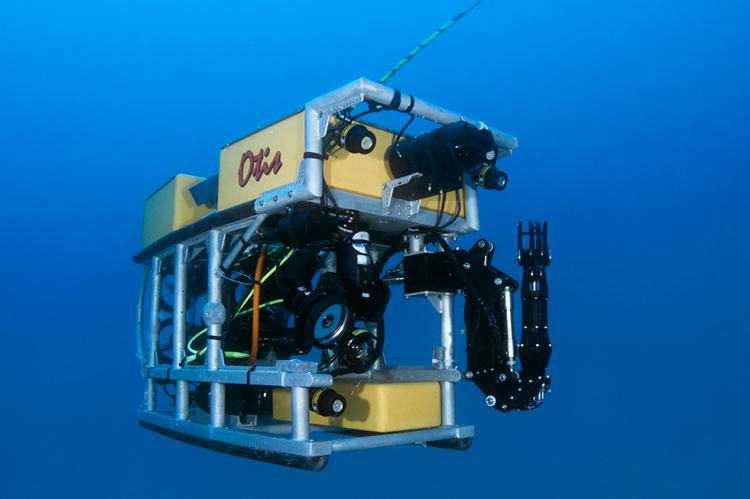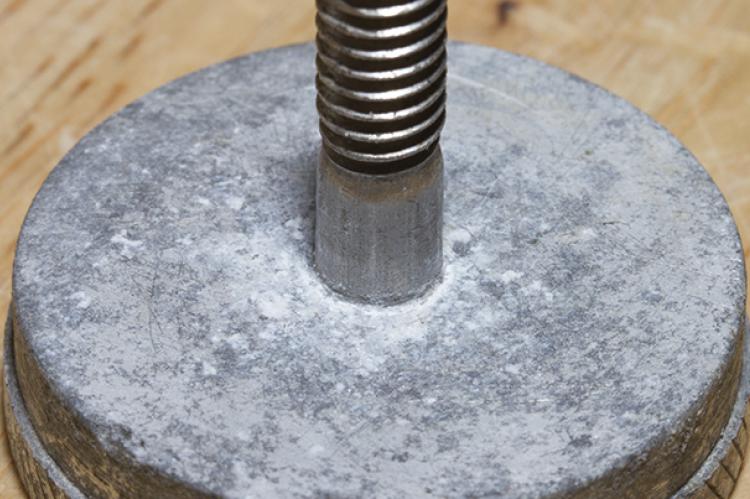Galvanic Corrosion: How to Keep at Bay
Place two dissimilar metals like aluminum and steel together in a salt water environment, the level of corrosion will (if not handled properly) quickly escalate to the point of causing permanent damage to your expensive equipment. But it doesn't have to be that way.
By definition, galvanic corrosion is an electrochemical process in which one metal type corrodes preferentially to another metal type when both metals are placed in contact with an electrolyte.
Put another way, corrosion occurs because dissimilar metals and alloys have different electrode potentials. When two or more dissimilar metals are immersed in an electrolyte solution (saltwater), one metal acts as an anode and the other as a cathode, essentially producing a direct electrical current not unlike a battery. During this reaction, also referred to as electrolysis, the less noble metal begins to act as the sacrificial anode, oxidizing and dissolving slowly into the electrolyte solution, then being re-deposited on the cathodic metal.
On its own, marine grade aluminum is usually highly resistant to destructive oxidation in air or water, including seawater, and to some extent acids, due to the toughness and adhesion of its natural oxide layer. However, when the same aluminum alloy is placed in direct contact with a dissimilar metal like stainless steel in an electrolyte solution, the more noble stainless attacks the less noble aluminum.
In short, the threaded surface of a stainless bolt of or screw will become fussed with the aluminum it was threaded into. Anybody who has worked with machinery in a saltwater environment knows exactly what I am taking about.
I can list two types of equipment where galvanic corrosion can, if not dealt with early can cause serious problems – aluminum camera housings and rebreathers designed for diving.
With the except of a couple models, most of the more important components on a rebreather – head, scrubber, loop hose fittings, etc. are made with various plastic composites including Delrin and PVC so galvanic corrosion is not an issue here.
Where it can be a problem, given seawater is an ideal electrolyte, is the frame or in my case the aluminum counter lung case on my KISS Classic, which is made of marine grade aluminum, is used to support both breathing loop and gas supply together. Add an aluminum or stainless to back plate, further adds to the amount of stainless steel hardware used to hold everything together.
The same is true with aluminum camera housings as the screws and bolts used to anchor the handles and strobe arm bases, not to mention the locking mechanism that secure the two halves of the housing together are made of stainless.

There are a variety of products that can be used to prevent this form of corrosion from taking place, but very few are very effective when immersed repeatedly and for prolonged periods in salt water. One of the products best suited for keeping galvanic corrosion at bay is Ultra Safety Systems Tef-Gel.

As the name implies, Tef-Gel is marine grade Teflon paste containing 40% polytetrafluoroethylene (PTFE) powder and no volatile solvents such as silicones or petroleum.

Due to Tef-Gel’s superb performance in hindering to the point of blocking the electrolyte interface between metallic surfaces of dissimilar metals, the product is widely used for a number of applications within the marine industry. Some of which include deep ocean operating vehicles like this ROV.
My own personal experiences with Tef-Gel began some 15 years ago when I became fed up with the small stainless screws used to hold locking laches on my expensive aluminum underwater camera housing. These screws had a nasty habit of seizing permanently in place, or worse, fell out as the threaded hole they occupied was eaten away by galvanic corrosion. After some experimenting with different corrosion blockers, I found the Tef-Gel worked best by far, to the point where I could easily remove any screw that was treated five years earlier, finding almost zero corrosion had occurred.
When I purchased my first KISS Classic (the Explorer model) back 2009, I naturally treated all the aluminum and stainless metal hardware in the spine and counter lung case with Tef-Gel the same way I still do with all my camera housing.
By doing so, those same metal parts after years of exposure to sea water are nearly as corrosion free and as easy to remove as they were the day I had bought that rebreather. It is for this reason that I strongly advise all Classic owners to consider corrosion proofing their unit, whether you are new owner, or one with an older model counter lung case that may want to up grade to newer Classic Explore model with needing to replace the spine. If possible, back out all the stainless screws and bolts that anchor the spine inside the counter lung case, and give them a good cleaning and coating with Tef-Gel. If corrosion has already set in, you should clean all the threaded surfaces of oxidation before applying the Gel.
Application is simple using either the mascara type brush that comes packaged with the larger tubes of Tef-Gel or a small toothbrush.

Coat both mating surfaces of nuts and bolts as well as the threaded holes. When both surfaces are coated and mated with Tef-Gel, electrolytes (saltwater) cannot be drawn in by capillary action. Tef-Gel will provide years of corrosion protection, because it will not evaporate or dry out in air or seawater. The Teflon resin in the gel also works as a friction barrier that will prevent parts from seizing up when the hardware needs to be dissembled.
Understanding this feature, Tef-Gel is not exclusive to use with dissimilar metals, but can also be used on metal hardware with the same or similar noble properties to one another like brass to brass, or stainless to stainless. Yes, even the best grade stainless is not entirely corrosion free when exposed to saltwater. Left unattended, anything threaded together, like stainless sex bolts used on some dive harnesses, can rust to a point of permanently seizing together, making for a bad day when you decide to take it apart.
Ultra Safety Systems Tef-Gel can be purchased from broad number marine supply centers across North America as well as through Amazon.com, just be sure that what you are looking at is Tef-Gel and not something else.

